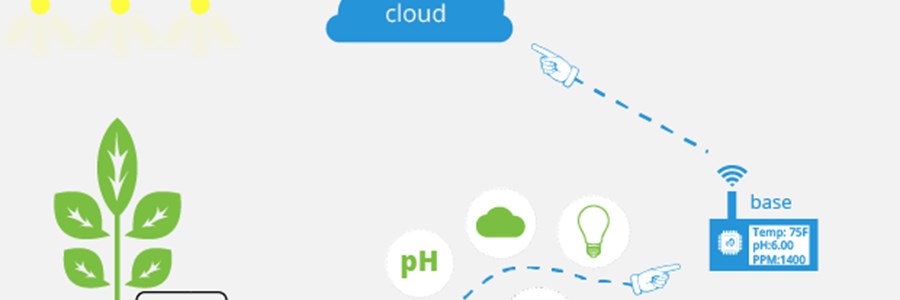Internet of things in Agriculture Engineering

Hi, my dear agro-Engineers !!
Today we are going to talk a little about Internet of things in Agriculture Engineering, since it is an issue that is already topical, and that will be implemented very quickly. First of all, the Internet of things is the interconnection of everyday objects with the Internet.
Do you imagine cows with digital collars, sensors on the banks, and monitors of rainfall and river flows? They are already a reality with the Internet of things, without going any further in some cattle farms they implement cows to GPS collars, which tell them the number of steps they take, how much they move, etc., so they know if they enter into zeal, what are their favorite places of the farm, etc. If this information is also overturned on the internet in real time, a tremendous advance is made.
This technology, which allows object-to-object communication over the Internet and real-time data tracking, has generally been associated with the urban environment and until now the field had been left to its fate.
Problems ranging from flooding and agricultural pollution to animal movements and drought could benefit from smart technology.
The Internet of Things, which takes everyday objects and connects them to the Internet, represents a change in the way we gather and use information. The application in the field of this technology presents challenges, such as building a communications network when there are mountains and trees along the way, but the benefits are enormous.
Cities have been the hub of much of the boom in this type of technology, which has been used to keep traffic on our roads, control air pollution and even help us find a parking lot on a busy Saturday afternoon.
An example that I can talk is the use of Smart cities in this sense, since in the company where I was working (multinational sector services, and specialized in garbage containers), they had sensors in underground garbage containers that warned of when they were filled, all interconnected with the Internet, among others.
In the field one faces its own challenges, from subtle environmental changes to catastrophic events like floods. The possibilities of bringing the Internet of the objects to the field are limitless.
In Spain ICTs are already being used in agriculture, but they must overcome the resistance of many farmers, who doubt their usefulness and durability.
The "smart agro is not informing market prices to farmers in real time so they know at what prices to sell, nor a courier service." It is "to automate the use of information to make decisions."
One of the problems of the agro sector is that "it is not worth any type of device, because it is going to be in the open, it will have feeding needs different from those of other industrial processes, and the communications will be difficult".
Telefónica (Spanish telecommunications multinational company), develops different projects in the agronomic field, where they try to combine the machine-to-machine (M2M) with the Internet of Things (IOT). "We can make some machines understand the language or protocol of others." For this they have developed a platform, Smart Business Control, which translates between the protocols of the different manufacturers. Already they are working in sensing of the plot and in automation of the irrigation.
In addition to the potential in production, these technologies help make people's lives more comfortable, they do not have to walk two kilometers to turn off or turn on a device, the information is presented to the farmer in a simple "and very visual" .
Another problem that arises is that the energy consumption of the devices must decrease, to implement them in places where the electricity does not arrive.
In short, it would be to interconnect everything with the Internet: For example in a greenhouse sensors of humidity, temperature, water on the floor, etc. All this information will arrive at a software, which will make the decision to water if it lacks water, to ventilate if the temperature rises a certain range, etc.
In my opinion it is very useful, but it has drawbacks: Imagine that a internet virus enters and disables the system: Would it stop everything from working ?, a difficult question to answer until it is not fully implemented. Also emphasize that the work niches would change, perhaps not so many agronomist engineers (or similar), but that probably are necessary computer engineers, specialists in networks, electronic engineers, etc.
To conclude, I leave an explanatory video with an example of what the Internet of things in agriculture means:
One way in which the Internet of things starts in agriculture, has different applications in smart phones, as I told you in the previous post.
With this I leave you until the next ...
